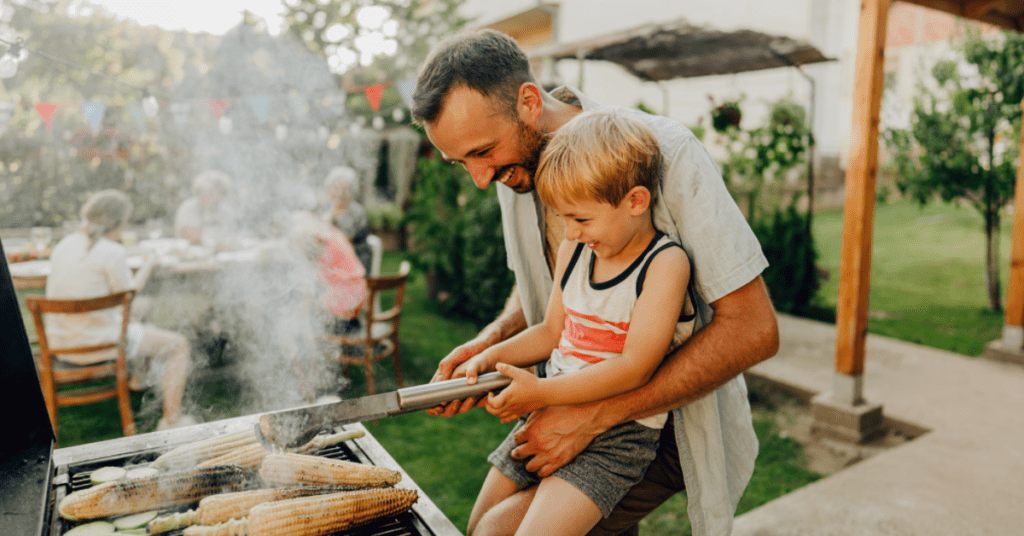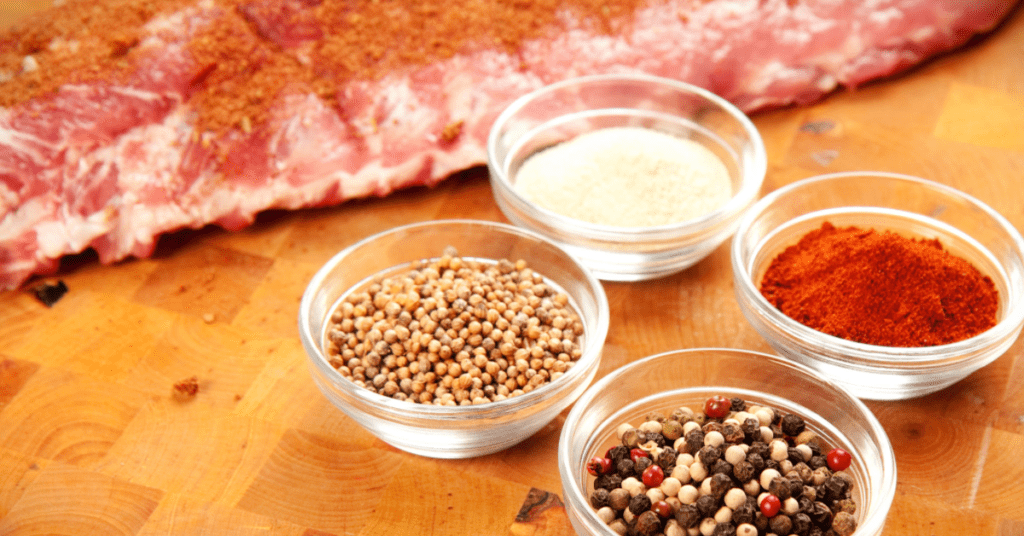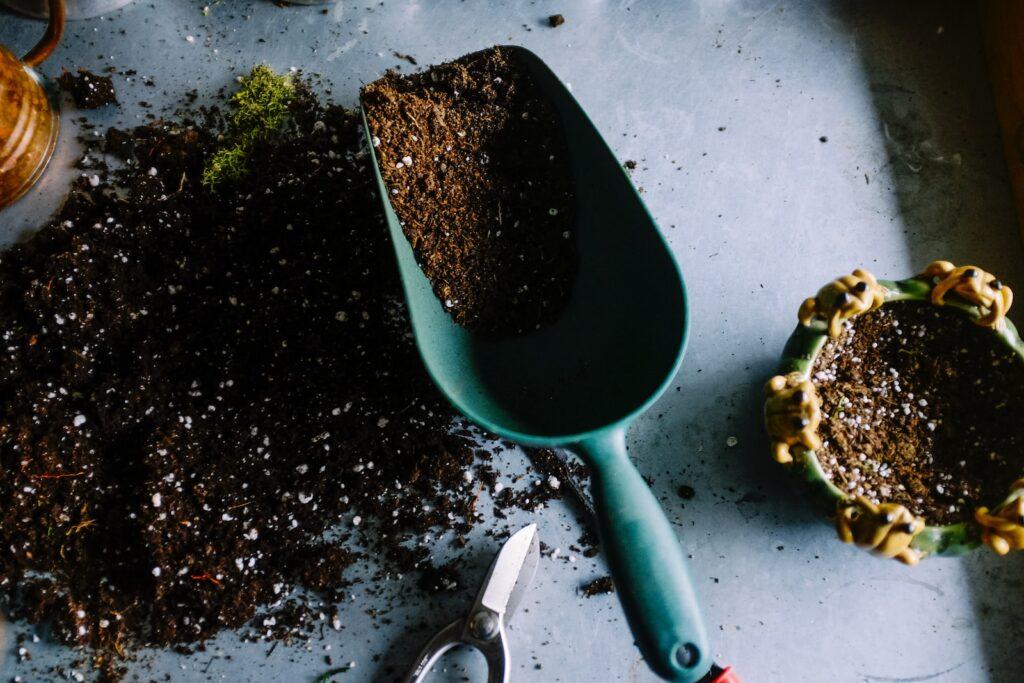Rated & Reviewed is reader-supported. When you buy through links on our site, we may earn an affiliate commission. Learn more.
Welcome to the world of outdoor cooking! Whether you’re a seasoned grill master or just starting your culinary adventure, this comprehensive guide to outdoor cooking techniques will equip you with the knowledge and techniques to become a pro at grilling and smoking. Get ready to elevate your outdoor cooking game and impress your friends and family with mouthwatering meals. Let’s dive in!

Outdoor cooking is more than just a way to prepare food – it’s an experience that brings people together and creates lasting memories. Whether you’re gathering with loved ones for a summer barbecue or simply enjoying a peaceful evening grilling by yourself, the art of grilling and smoking adds a special touch to any meal. In this guide, we’ll explore the essential techniques, tips, and tricks to help you master the art of outdoor cooking. From juicy steaks and perfectly smoked ribs to flavorful vegetables and delectable desserts, get ready to embark on a culinary journey that will tantalize your taste buds and ignite your passion for cooking.
The Basics of Grilling and Smoking
Grilling and smoking are two distinct cooking techniques that bring out unique flavors in your food. Understanding the basics of each method will set the foundation for your outdoor cooking mastery.
Grilling
Grilling involves cooking food over direct heat, typically using a gas or charcoal grill. It’s known for its ability to sear meats, create those coveted grill marks, and impart a smoky flavor. When grilling, it’s essential to preheat the grill, oil the grates to prevent sticking, and control the heat to achieve the desired doneness. Grilling is perfect for quick-cooking foods like burgers, hot dogs, vegetables, and even fruits.
Smoking
Smoking, on the other hand, is a slow-cooking method that infuses food with the rich flavors of smoldering wood. It involves cooking food at a low temperature for an extended period, allowing the smoke to permeate and tenderize the ingredients. Smokers, such as offset smokers, pellet smokers, or electric smokers, are commonly used for this technique. Smoking is ideal for tougher cuts of meat, such as brisket, ribs, or whole poultry, as it breaks down the connective tissues and imparts a distinct smoky taste.
Whether you’re grilling steaks to perfection or slow-smoking a mouthwatering rack of ribs, understanding the differences between grilling and smoking will help you choose the right technique for your desired flavors and cooking goals.
Safety Tips for Outdoor Cooking
While outdoor cooking is enjoyable, it’s crucial to prioritize safety to prevent accidents and ensure a smooth culinary experience. Here are some essential safety tips to keep in mind:
- Choose a safe location: Set up your grill or smoker in a well-ventilated area away from any flammable objects, such as trees, overhanging structures, or dry leaves. Ensure the cooking area is stable and on a level surface.
- Clean and maintain your equipment: Regularly clean your grill or smoker to remove grease buildup, which can be a fire hazard. Check for gas leaks in gas grills and ensure proper ventilation in smokers.
- Keep a fire extinguisher nearby: Have a fire extinguisher accessible in case of emergencies. Familiarize yourself with its usage and ensure it is in good working condition.
- Use proper lighting methods: Follow the manufacturer’s instructions for safely lighting your grill or smoker. Avoid using excessive lighter fluid or other accelerants.
- Practice proper food handling: Wash your hands before and after handling raw meat. Use separate utensils and cutting boards for raw and cooked foods to avoid cross-contamination.
Remember, safety should always be a top priority when cooking outdoors. By following these tips, you can enjoy your outdoor cooking experience with peace of mind.
Essential Grilling Techniques
Grilling is a versatile cooking method that allows you to create delicious dishes with distinct flavors and textures. To enhance your grilling skills, here are some essential techniques to master:
Direct Heat vs. Indirect Heat
Understanding the difference between direct heat and indirect heat is crucial for achieving optimal results. Direct heat is used for quick-cooking foods like burgers and vegetables, where the food is placed directly over the heat source. Indirect heat, on the other hand, is ideal for larger cuts of meat that require slow and gentle cooking. In this method, the heat source is positioned to the side, allowing the food to cook indirectly, similar to roasting.
Preheating the Grill
Preheating your grill is essential for even cooking and creating those desirable sear marks. Allow your grill to heat up for at least 10-15 minutes before placing food on the grates. This ensures that the cooking surface reaches the desired temperature and minimizes the chances of food sticking.
Properly Seasoning the Food
Seasoning is key to enhancing the flavors of your grilled dishes. Before grilling, season your meat, fish, or vegetables with your favorite rubs, marinades, or a simple sprinkle of salt and pepper. Let the flavors infuse for some time before placing the food on the grill.
Controlling the Grill Temperature
Maintaining the right temperature is crucial for successful grilling. Gas grills usually have temperature control knobs, allowing you to adjust the flame. For charcoal grills, you can control the temperature by adjusting the airflow through the vents. Understanding your grill’s temperature zones will help you cook different foods at their preferred heat levels.
Mastering Smoking Techniques
Smoking is a slow and low cooking technique that imparts incredible flavor and tenderness to various meats and even vegetables. To become a master of smoking, here are some essential techniques to practice:
Choosing the Right Wood
Selecting the right wood for smoking is vital as it contributes to the flavor profile of your dishes. Different woods, such as hickory, mesquite, applewood, or cherry, offer distinct flavors. Experiment with various wood types to find your preferred combination for different meats.
Creating Smoke and Maintaining Temperature
To generate smoke, soak wood chips or chunks in water for at least 30 minutes before placing them in your smoker. The moisture helps produce smoke that infuses into the food. Additionally, ensure you maintain a consistent temperature throughout the smoking process by adjusting the airflow and adding charcoal or wood as needed.
Using a Water Pan
A water pan placed in the smoker can help regulate temperature and moisture levels. It acts as a heat sink, providing a stable cooking environment and preventing the food from drying out. Fill the water pan with hot water and monitor the water level during the smoking process.
The Importance of Patience
Smoking is a slow cooking method that requires patience. It’s essential to maintain a steady temperature and allow the food to cook slowly, allowing the smoke to work its magic. Avoid the temptation to rush the process, as the results are well worth the wait.
Flavorful Marinades and Rubs
Marinades and rubs are fantastic ways to infuse flavor into your grilled and smoked dishes. Here are some tips for creating delicious marinades and rubs:
Marinades
Marinades are liquid mixtures typically consisting of an acidic ingredient, oil, herbs, spices, and aromatics. They help tenderize the meat and infuse it with flavors. To marinate effectively, place the food and marinade in a resealable bag or a covered container and refrigerate for the recommended time. Be cautious not to over-marinate, as it can lead to a mushy texture.
Rubs
Rubs are dry mixtures of herbs, spices, salt, sugar, and sometimes other ingredients like coffee grounds or cocoa powder. They create a flavorful crust on the exterior of the meat. Generously coat your meat with the rub, ensuring it adheres well. For the best results, let the seasoned meat rest in the refrigerator for some time before cooking.
Experiment with different marinades and rubs to discover unique flavor combinations that elevate your outdoor cooking creations. In the next sections, we’ll delve deeper into specific techniques, marinade recipes, and rub ideas for various types of meat and vegetables.
Grilling and Smoking Different Meats and Vegetables
Grilling and smoking offer endless possibilities for cooking a wide range of meats and vegetables. Let’s explore some popular options and techniques for achieving delicious results:
Grilling Meats
- Burgers: For juicy burgers, select ground beef with a higher fat content (80/20 or 85/15) and shape them into patties. Grill over direct heat, flipping once, until they reach your desired doneness.
- Steaks: Preheat the grill to high heat for a delicious sear. For thicker cuts like ribeye or filet mignon, sear on high heat for a few minutes on each side, then move to indirect heat to continue cooking to your preferred level of doneness.
- Chicken: Marinate boneless chicken breasts or thighs for extra flavor and tenderness. Grill over medium heat until the internal temperature reaches 165°F (74°C), ensuring it’s cooked through but still juicy.
- Fish: Use a grill basket or aluminum foil to prevent delicate fish from sticking to the grates. Brush with oil, season, and grill over medium heat until the flesh is opaque and flakes easily with a fork.
Smoking Meats
- Brisket: Rub the brisket with your preferred seasoning and smoke it low and slow at around 225°F (107°C). Wrap it in foil or butcher paper after a few hours to help retain moisture, and continue smoking until it reaches an internal temperature of around 200°F (93°C) for a tender and flavorful result.
- Ribs: Apply a dry rub or marinade to the ribs and smoke them at a temperature of around 225°F (107°C). Use the 3-2-1 method for baby back ribs (3 hours of smoking, 2 hours wrapped in foil with liquid, and 1 hour back on the smoker) or the 2-2-1 method for spare ribs.
- Pork Shoulder: Rub the pork shoulder with your favorite spice blend and smoke it at a low temperature of around 225°F (107°C) until it reaches an internal temperature of 195°F (90°C) for pulled pork that’s tender and packed with flavor.
- Vegetables: Grilling and smoking vegetables adds depth and smokiness to their natural flavors. Brush them with oil, season with salt and pepper, and grill or smoke until they’re tender and slightly charred. Popular options include corn on the cob, bell peppers, zucchini, and eggplant.
Experiment with different cuts of meat and vegetables, adjust cooking times and temperatures based on your preferences, and don’t be afraid to add your own creative twists to recipes.
Flavorful Marinade Recipes
Marinades infuse meat and vegetables with incredible flavors and tenderize tougher cuts. Here are some mouthwatering marinade recipes to try:
Lemon Herb Marinade
- 1/4 cup lemon juice
- 2 tablespoons olive oil
- 2 garlic cloves, minced
- 1 tablespoon fresh thyme, chopped
- 1 tablespoon fresh rosemary, chopped
- Salt and pepper to taste
Whisk all the ingredients together in a bowl. Place the meat or vegetables in a resealable bag, pour in the marinade, and refrigerate for at least 1 hour (or up to overnight) before grilling or smoking.
Teriyaki Marinade
- 1/4 cup soy sauce
- 2 tablespoons honey
- 1 tablespoon rice vinegar
- 1 garlic clove, minced
- 1 teaspoon grated fresh ginger
- 1/4 teaspoon sesame oil
Combine all the ingredients in a bowl, stirring until the honey is dissolved. Place the meat or vegetables in a resealable bag, pour in the marinade, and let it marinate in the refrigerator for at least 30 minutes before grilling or smoking.
Spicy BBQ Marinade
- 1/2 cup barbecue sauce
- 2 tablespoons hot sauce
- 2 tablespoons Worcestershire sauce
- 1 tablespoon Dijon mustard
- 1 tablespoon brown sugar
- 1 teaspoon garlic powder
- 1/2 teaspoon smoked paprika
- Salt and pepper to taste
In a bowl, whisk together all the ingredients until well combined. Place the meat or vegetables in a resealable bag, pour in the marinade, and refrigerate for at least 2 hours (or up to overnight) before grilling or smoking.
Feel free to adjust the ingredients and quantities based on your preferences and the amount of meat or vegetables you’re marinating.
Creative Rub Ideas
Rubs are an excellent way to add flavor and texture to your grilled or smoked dishes. Here are a few rub ideas to get your taste buds tingling:

Coffee Cocoa Rub
- 2 tablespoons ground coffee
- 2 tablespoons cocoa powder
- 1 tablespoon brown sugar
- 1 teaspoon chili powder
- 1 teaspoon paprika
- 1/2 teaspoon salt
- 1/2 teaspoon black pepper
Combine all the ingredients in a bowl and mix well. Generously apply the rub to your meat or vegetables before grilling or smoking.
Smoky Chipotle Rub
- 1 tablespoon chipotle powder
- 1 tablespoon smoked paprika
- 1 tablespoon brown sugar
- 1 teaspoon garlic powder
- 1 teaspoon onion powder
- 1/2 teaspoon salt
- 1/2 teaspoon black pepper
In a bowl, mix together all the ingredients until well combined. Massage the rub onto your meat or vegetables, ensuring an even coating.
Herbed Garlic Rub
- 2 tablespoons dried rosemary
- 2 tablespoons dried thyme
- 2 tablespoons dried oregano
- 1 tablespoon garlic powder
- 1 tablespoon onion powder
- 1 teaspoon salt
- 1 teaspoon black pepper
Combine all the ingredients in a bowl and mix thoroughly. Apply the rub generously to your meat or vegetables before grilling or smoking.
Experiment with different combinations of herbs, spices, and seasonings to create your own signature rubs that will make your outdoor cooking truly remarkable.
With these techniques, marinade recipes, and rub ideas, you’re well on your way to mastering the art of grilling and smoking. Remember to practice safety precautions while using outdoor cooking equipment, follow recommended cooking temperatures and times, and most importantly, have fun and enjoy the process!
FAQs
Q: How do I clean my grill after use?
A: To clean your grill, start by brushing off any food debris from the grates using a grill brush. Then, wipe down the exterior with warm soapy water and a sponge or cloth. For stubborn grease or residue, you can use a grill cleaner or a mixture of baking soda and water. Rinse thoroughly and allow the grill to dry before storing.
Q: How long should I let meat rest after grilling or smoking?
A: It’s recommended to let meat rest for a few minutes after grilling or smoking. This allows the juices to redistribute throughout the meat, resulting in a more flavorful and tender bite. As a general rule, let smaller cuts rest for about 5-10 minutes, while larger cuts like roasts or whole chickens may require 15-20 minutes of resting time.
Q: Can I use marinades for both grilling and smoking?
A: Yes, marinades can be used for both grilling and smoking. Marinating meat or vegetables adds flavor and helps tenderize tougher cuts. Keep in mind that marinades with high sugar content may cause excessive charring when exposed to high heat, so adjust your cooking temperature and time accordingly.
Q: What is indirect grilling?
A: Indirect grilling involves cooking food next to, rather than directly over, the heat source. This method is ideal for larger cuts of meat that require slower and more gentle cooking. To set up an indirect grilling zone, heat one side of the grill and place the food on the other side. This allows for indirect heat to cook the food more evenly and prevents excessive charring.
Q: Can I grill or smoke vegetables?
A: Absolutely! Grilling and smoking vegetables adds delicious smoky flavors and enhances their natural sweetness. You can grill or smoke a variety of vegetables, such as corn on the cob, bell peppers, zucchini, eggplant, and even mushrooms. Brush the vegetables with oil, season them with salt and pepper, and cook until tender and slightly charred.
Q: How do I prevent flare-ups on the grill?
A: To prevent flare-ups, make sure to trim excess fat from meat before grilling. If you’re using a charcoal grill, spread the coals evenly and avoid excessive dripping of fats onto the coals. For gas grills, keep the burners clean and adjust them to a lower heat setting if needed. Additionally, having a spray bottle of water on hand can help tame any sudden flare-ups.
Amazon and the Amazon logo are trademarks of Amazon.com, Inc, or its affiliates.


